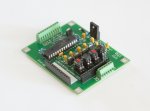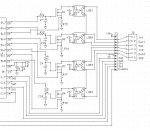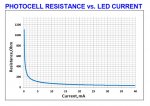I’m just curious, and I don’t have the math skills to figure this out for myself, hoping someone can answer the question without difficulty.
I’ve been using this circuit for years on 28X2s having created it to precisely control the resistance of a very non-linear LDR over a resistance range of 40R to 10K with 10K requiring vanishingly small amounts of current, but now I’d like to know:
I use two overlapping 10-bit ADC10 ranges, one being 0-5V (supply) to control up to 10mA of current and resistances from 40R to about 220R, and the second being 0~0.297V to cover the range from 220R up to 10K ohms with high resolution especially near the 10K point. But what is the effective bit resolution of the combined ranges? Is this range and resolution within the capability of a 12-bit device?
Or maybe the question doesn't make any sense?
I’ve been using this circuit for years on 28X2s having created it to precisely control the resistance of a very non-linear LDR over a resistance range of 40R to 10K with 10K requiring vanishingly small amounts of current, but now I’d like to know:
I use two overlapping 10-bit ADC10 ranges, one being 0-5V (supply) to control up to 10mA of current and resistances from 40R to about 220R, and the second being 0~0.297V to cover the range from 220R up to 10K ohms with high resolution especially near the 10K point. But what is the effective bit resolution of the combined ranges? Is this range and resolution within the capability of a 12-bit device?
Or maybe the question doesn't make any sense?




